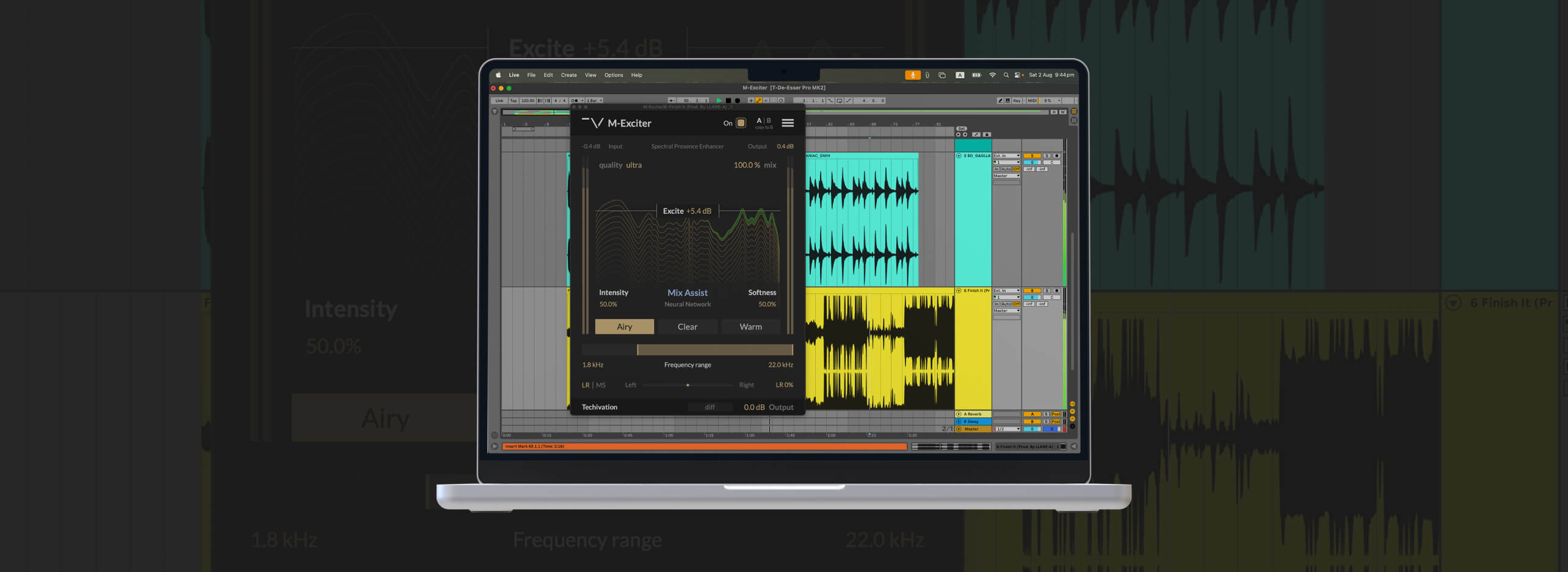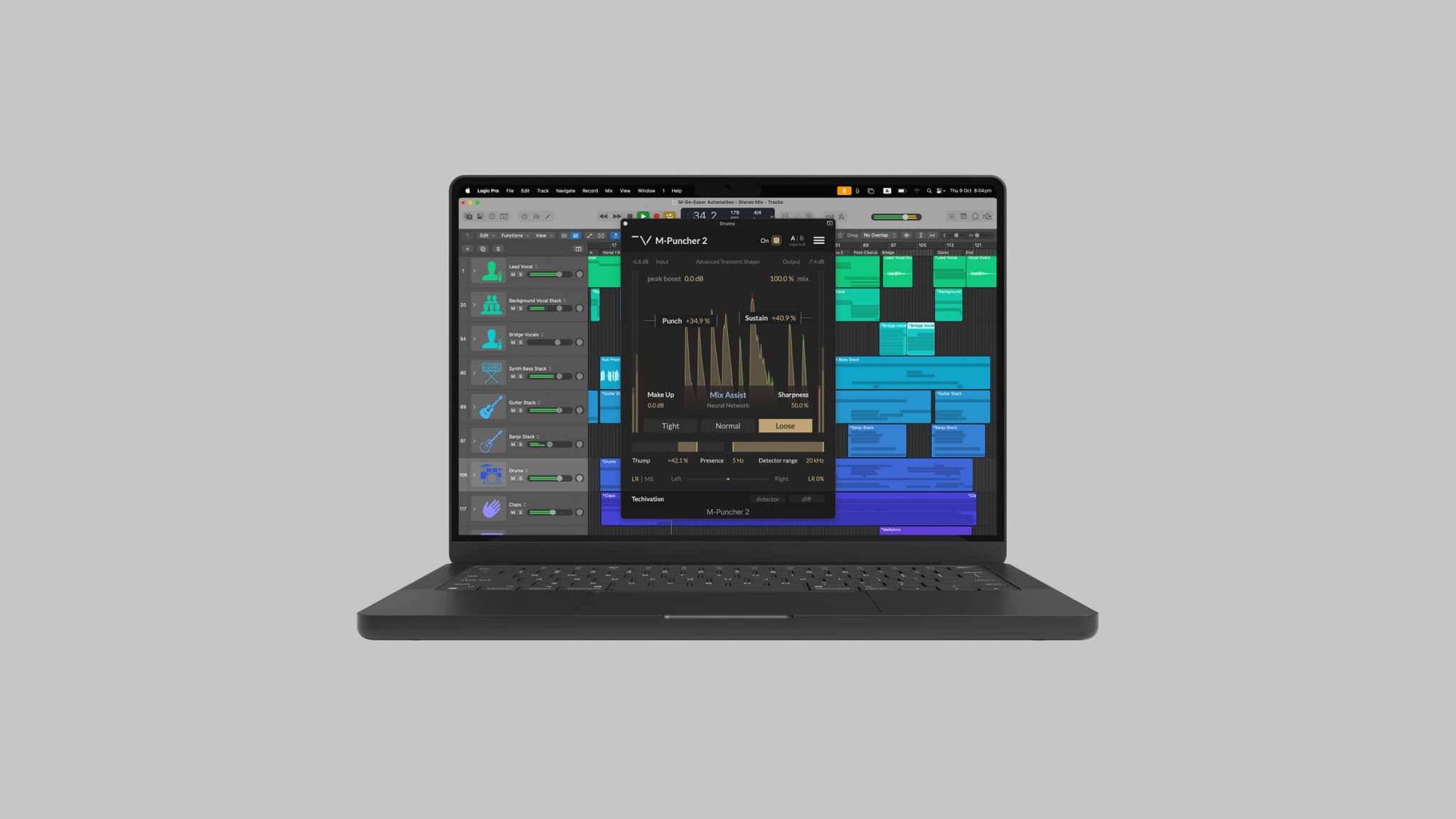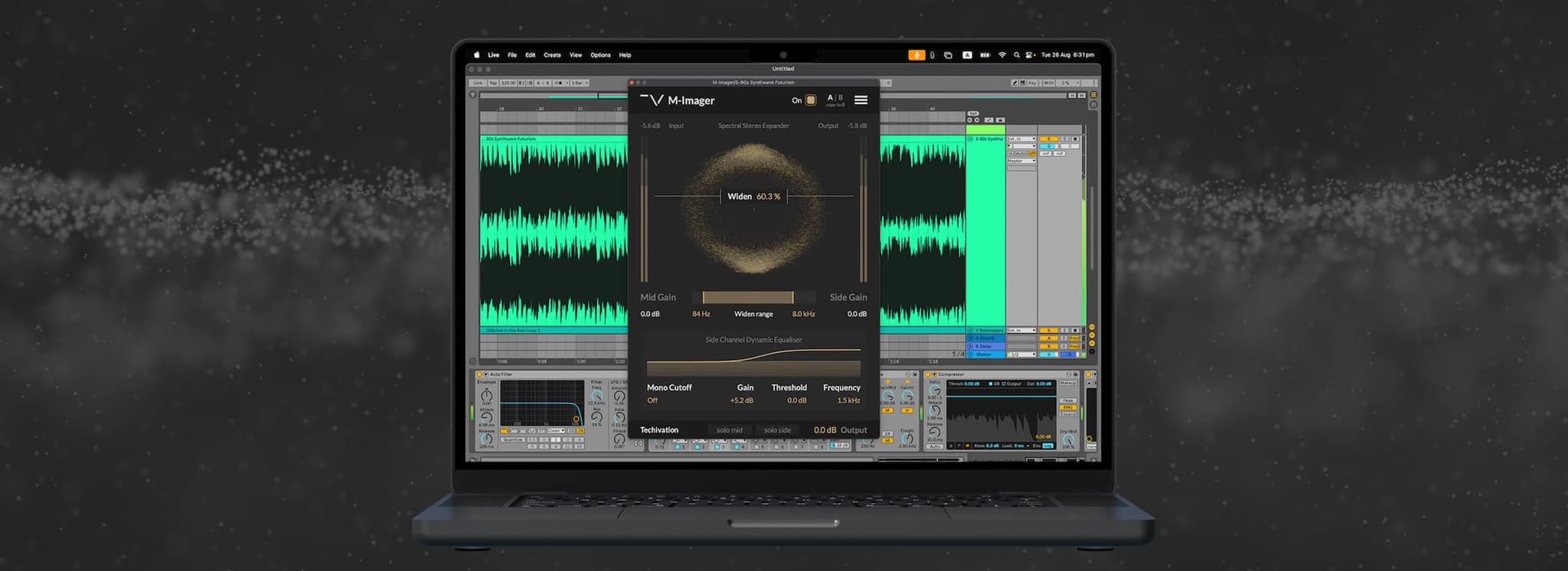
Summary: M-Exciter is a spectral harmonic generator that adds air, presence, and detail without harshness or transient smear. Use this cheatsheet to explore it fast and get mix-ready results.
1) Glue a vocal stack without compression
Duplicate your vocal group, load Warm mode, focus the Frequency Range around 3 kHz to 6 kHz, push Excitement to +4 dB or +5 dB, set Softness near 40 percent to keep edges civil, then blend at 30 to 40 percent Mix.
Result: Cohesion across takes without flattening dynamics.
2) Re-mic a dead acoustic guitar
Target 4 kHz to 8 kHz, drive Excitement to +5 dB or +6 dB, set Softness 50 to 60 percent for smoothness, Mix at 100 percent.
Result: Pick definition and air, like a bright condenser in a treated room.
3) Instant synth lift before the drop
Automate Mix from 0 to 100 percent over the last bar before the chorus. Use Clear mode, Range at 6 kHz to 10 kHz, Excitement +3 dB or +4 dB, Softness about 20 percent for bite.
Result: The synth blooms into the section without sounding hyped.
4) Pull clashing instruments apart
When two parts fight in the mids, give them different harmonic zones. Put one at 2 kHz to 4 kHz, the other at 7 kHz to 10 kHz. Adjust Softness per track so both stay clear.
Tip: For a smart solution to separate clashing tracks within your mix, try Techivation M-Blender, which creates space in a mix by cleaning up clashing frequencies between tracks using true spectral processing.
Result: Separation without heavy EQ cuts or awkward panning.
5) Record-ready drum overheads
Pick Airy mode, aim at 9 kHz to 13 kHz, set Excitement around +3 dB, Softness near 30 percent to suppress splash harshness, then blend to taste.
Result: Natural shimmer that feels mix-ready out of the gate.
M-Exciter Review by Audio Toolshed
Watch Audio Toolshed’s detailed review of M-Exciter and hear it in action:
6) Rescue over-de-essed vocals
If a vocal turned dull after heavy de-essing, target 5 kHz to 8 kHz, keep Excitement low at +1 dB to +2 dB, set Softness 40 to 50 percent so the restored brightness stays smooth.
Result: Intelligibility returns without reviving the hiss.
Tip: For transparent de-essing before you restore the highs, check out M-De-Esser 2 and see it in action below:
7) Low-level magic on the master bus
Mastering needs restraint. Use Clear mode, aim at 8 kHz to 12 kHz, Excitement 1 dB to 1.5 dB, Softness near 50 percent, Mix around 70 percent.
Result: No obvious effect. It just sounds finished.
Tip: For transparent loudness enhancement without losing punch, affecting dynamic range, or increasing peak levels, explore AI-Loudener and watch Studio Life’s review:
8) Harmonic parallel crunch for percussion
On loops, choose Warm mode, target 3 kHz to 7 kHz, drive Excitement hard, keep Softness low at 10 to 20 percent for aggression, then blend in parallel at 20 to 30 percent.
Result: Extra cut and character without wrecking transients.
9) Midrange forward button for dense mixes
When the track is crowded, set Clear mode, aim at 1.5 kHz to 4 kHz, Excitement +3 dB to +4 dB, Softness about 20 percent to keep energy alive.
Result: Guitars, snare snap, and vocal consonants come forward fast, with less EQ surgery.
Notes that matter
- Softness = spectral suppression. More Softness means stronger suppression that prevents harshness. Less Softness means more bite. Use it as your safety net when you push Excitement.
- Mix Assist is a time saver. Use it for a starting point, then fine tune by ear.
- Level match using Output Gain when A/B testing so loudness doesn’t bias your judgement.
Try M-Exciter 14-Days for Free!
Click here to download your free trial and experience how M-Exciter can add natural air, presence, and detail to your mixes without harshness.

![[Video] New Update Released: Techivation M-Exciter](/_next/image?url=https%3A%2F%2Fstatic.techivation.com%2Fuploads%2FM-Exciter%2520New%2520Update.jpg&w=2048&q=75&dpl=dpl_AQiaDxk2GN8ntNZXBkX1jYWvijKa)


